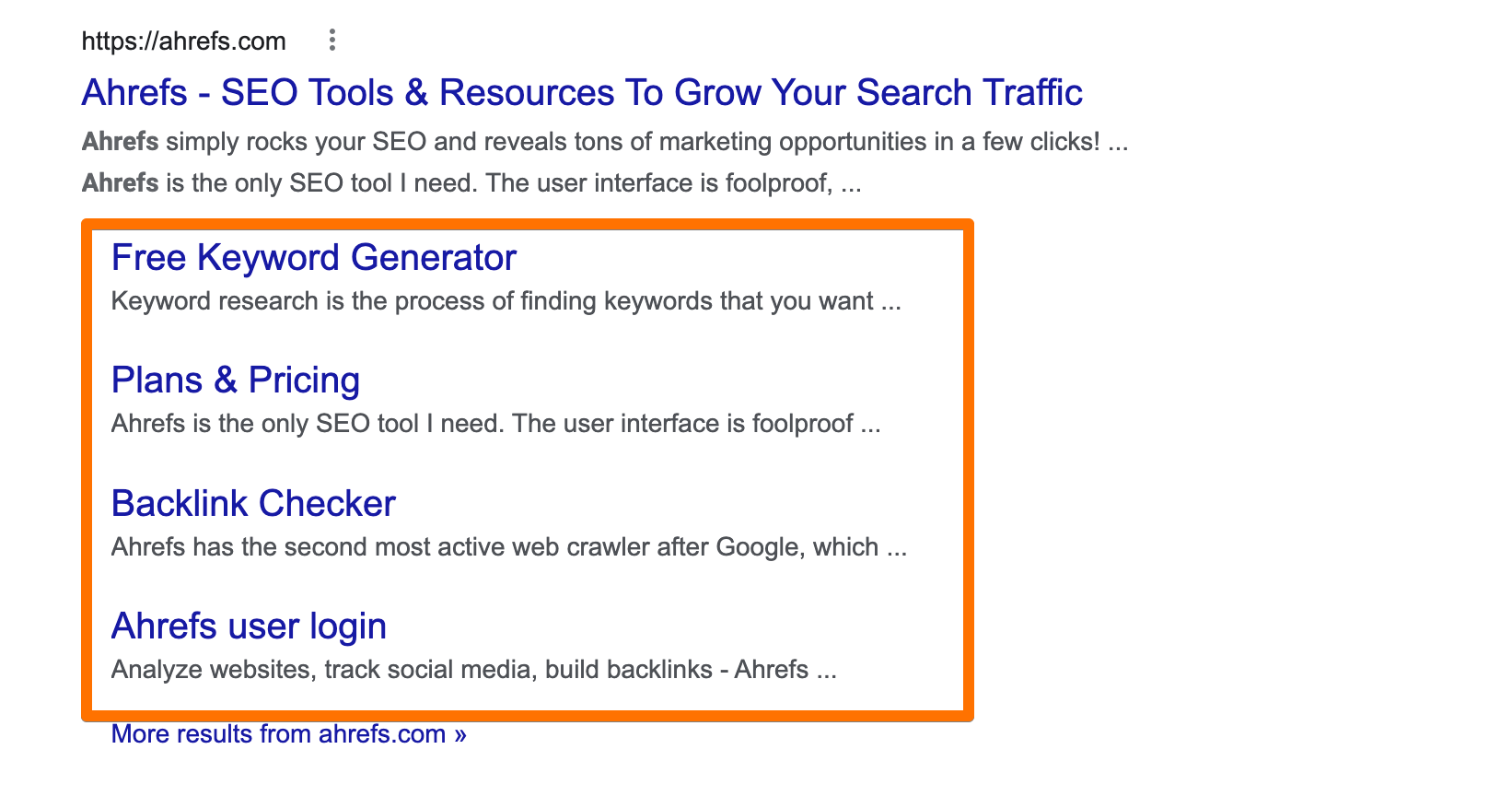Sitelinks
What are Sitelinks?
Sitelinks are a cluster of links that appear under some search results on SERPs. They are the links to the other important, relevant pages on the ranking site or to other parts of the ranking page. Google analyzes your site structure and finds the shortcuts to certain sections of your site and displays them as sitelinks.
Sitelinks are one of the most common SERP features. A quick study using our Keywords Explorer shows that sitelinks appear for approximately 80% of searches.
Over the years, sitelinks have evolved, and Google shows them in different ways. Here are the three main types of sitelinks you can frequently encounter during the search:
Organic sitelinks (standard)
You’ll often see these sitelinks below the top search result when you search for a brand. Here’s an example:
Google usually shows four links, but sometimes the number can go up to six.

Organic sitelinks (horizontal)
Also known as horizontal or one-line sitelinks, these links can appear for many types of search queries. This type of sitelinks can also lead to different sections or content within a page using fragment (#) links.

Sitelink assets
Sometimes, you’d also see some search ads with sitelinks on them. They are called sitelink assets (or paid sitelinks).
Unlike organic sitelinks, you have total control over paid sitelinks. You can also choose the text and URLs that’ll appear with your ads.

Why are sitelinks important?
Sitelinks are important for SEO because they give your website more visibility by occupying more real estate on SERPs.
Besides, the results with sitelinks stand out from other search results. Thus, searchers are more likely to click on your site, and you’d be able to drive more organic traffic.
Also, sitelinks are shortcuts that help users find the page they’re looking for on your site with just one click.
Sitelinks best practices
Earlier, you had the option to demote the URLs that could appear as sitelinks with the help of Google Search Console. However, Google has removed that feature, and now there’s no way you can edit the organic sitelinks.
But you can influence them with the below best practices. Also, note that these practices are only applicable to organic sitelinks.
1. Use informative titles and headings
The page titles and headings are crucial on-page SEO elements for your website. Google uses the title and header tags to make sense of the pages while including them in the sitelink feature.
So make sure your titles and headings are clear, informative, and relevant. This will help Google understand your pages better and cluster them together for sitelinks.
2. Keep a meaningful website structure
Ensure your website structure is logical, organized, and has a clear hierarchy. It not only helps users navigate through your site easily, but it also assists Google in crawling your website.
Thus, your site architecture has a significant role in sitelinks.
3. Create a robust internal linking structure
It’s not a secret that Google uses internal links (not just inbound links) to determine the importance of a page. Besides, it also understands your pages better by analyzing the anchor texts used for internal linking.
Put simply, internal links play an important role in how Google shows sitelinks. So, make sure:
- You link to the important pages from other relevant pages of your site and vice versa.
- You use relevant and concise anchor texts for your internal links.
How to remove a sitelink from Google?
Weirdly, the only guaranteed way to remove an unwanted sitelink is by using the noindex tag. However, you must use the noindex tag with caution because it’ll remove your page from all search results, not just from sitelinks.